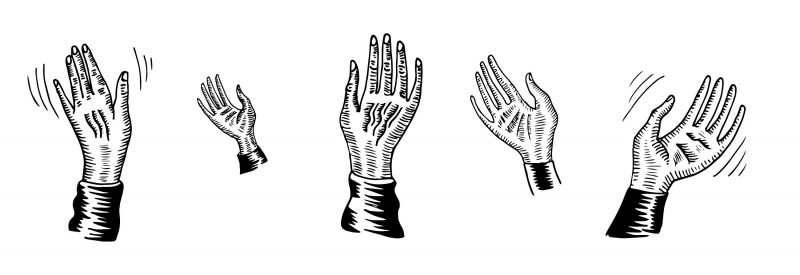
many years ago, as i was driving for a weekend to my hometown in northeastern manitoba, passing through the brokenhead first nation, i noticed two elders, sitting in lawn chairs by the side of the road,who raised their arms high to wave at me as i went by. i waved back. my first thought was, ‘wow, that’s crazy! are they waving at every car that passes?’ on my return trip a few days later, they were still out there in the sunshine, waving at everyone who drove by. highway 59 up the east side of lake winnipeg leads to the biggest white sand beaches in the province, and to a large part of cottage country. the weekend traffic is very, very busy. so my thought then was, ‘that’s pretty amazing endurance.’ the next time that i drove up, maybe a month later, i saw them again. they waved. i waved. it was normalized. i thought, ‘they probably don’t have anything better to do.’ after seeing them many times, whenever the weather was nice, i thought, ‘this is nice.’ it became something i looked forward to: a very small bit of friendly human contact from people i never knew. they were there, waving at everyone who drove by, for some years. then they weren’t. i missed them. later, when a gas station was built across from the casino on the main highway, it was called wavers with an outline picture of them in their lawn chairs, waving. i was glad they had been ‘recognized’ by the local community.
people wave back, creating an intricate mimetic musicality of motions
i thought of them again today, and i realized that those elders had a lesson to teach, which they taught in typical anishinaabe fashion, by their actions, their gentle gestures, rather than their speech or preaching. during the coronapocalypse, my street has been closed to traffic. the province, in spite of a vicious conservative government that is using the occasion to impose more austerity, has been doing relatively well: we started social distancing early and so far it seems to have been working. people are using the road to get out, staying safely apart from each other. families, bikers, joggers, walkers and wheelchairs are all out, chatting at a safe distance with friends and enjoying the spring that has finally arrived.
i’ve been running, moving off to my right or left to put distance between myself and anyone i encounter, whether they’re moving in the same or opposite direction as me. most of the time the people i encounter match my efforts, moving obviously to get a bit of distance from each other when we pass. sometimes we have to pass a bit closer than feels comfortable: i’ve taken to turning my head away as we near, a gesture antithetical to my small-town instinct of nodding and smiling to everyone. something about this dance of distancing, even though it’s the most caring and social thing i can do, feels antisocial: in the immediate relation of body to body on the street it feels disrespectful.
so i’ve taken to waving. at everyone. to me, this says i’m not avoiding you because i don’t trust or i don’t like you. i’m trying to make sure that we are both safe. we are in community together, even as we have to isolate from each other. a lot of people wave back, creating an intricate mimetic musicality of motions. some don’t. since i’m running, the time of these encounters is quite short and the gesture can hardly be taken as an unwelcome ‘come on’ the way a smile sometimes can. as i began doing this, i stumbled over the memory of those elders from brokenhead. theirs was a seemingly simple practice, but required patience and endurance. the lesson they taught me stayed in my body until, decades later, it emerged on its own to give me a small candle to carry for community in a dark time.
—winnipeg, april 28, 2020
postscript
gestures, a form of embodied inscription, have long been of concern to me particularly, as bearers of values. ephemeral and often read solely as markers or symptoms of individual character or pathology, it is important to also interrogate socially produced and circulated gestures. while entrenched battalions of gestures exist to demarcate social hierarchy, everyday bundles of gestures of resistance or egalitarianism make for compelling sites of study. the northern indigenous communities with whom i am privileged to work—cree/inninew, dene, inuit and anishinaabe—interest, engage, and inspire me as contemporary embodiments and prefigurative exemplars of intergenerational communities of production.
peter kulchyski is a professor of Native Studies at the University of Manitoba, Canada. He has been a member of the Hemi Council and co-director of the Canadian Consortium on Performance and Politics in the Americas. His most recent book is called Report of an Inquiry into an Injustice: Begade Shuhtagotine and the Sahtu Treaty (UManitobaP 2018).